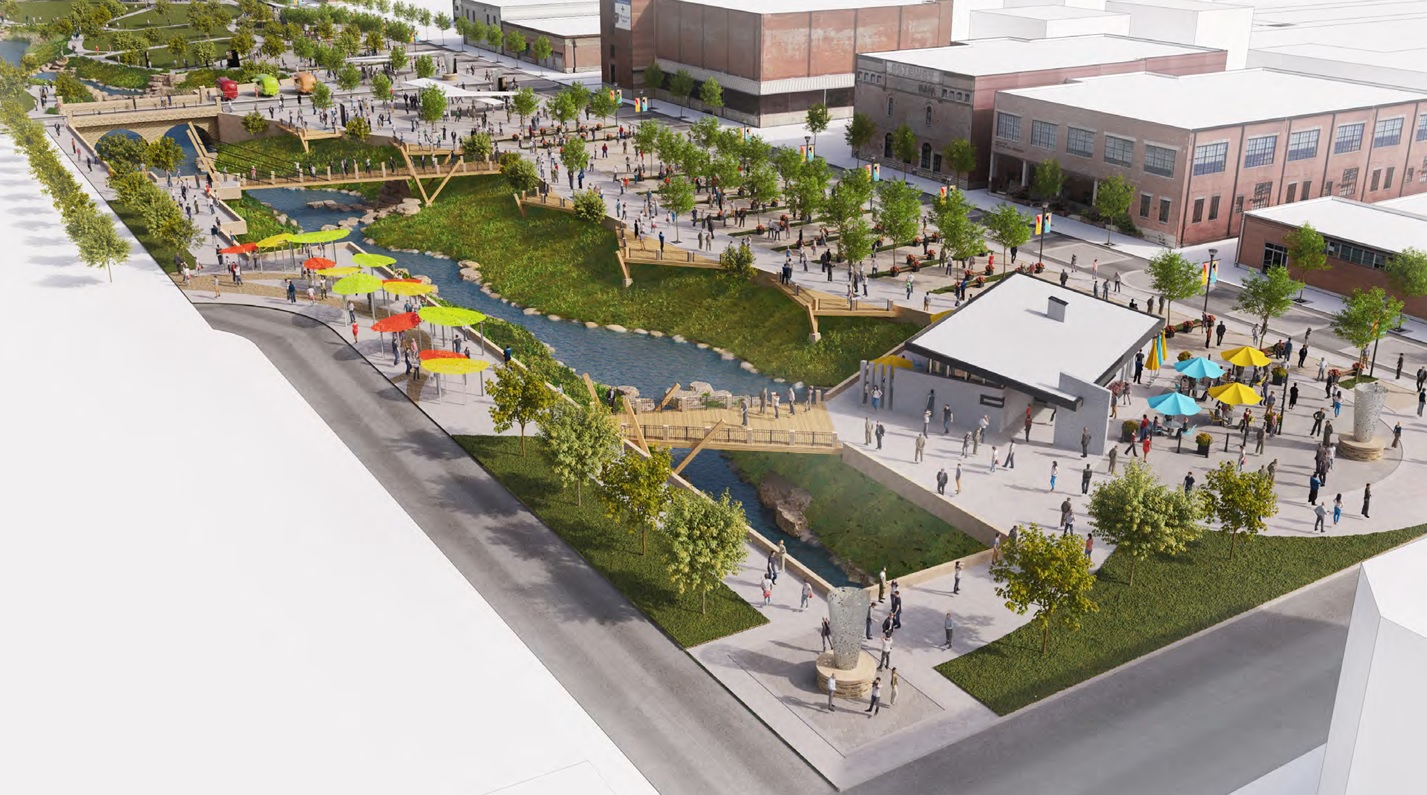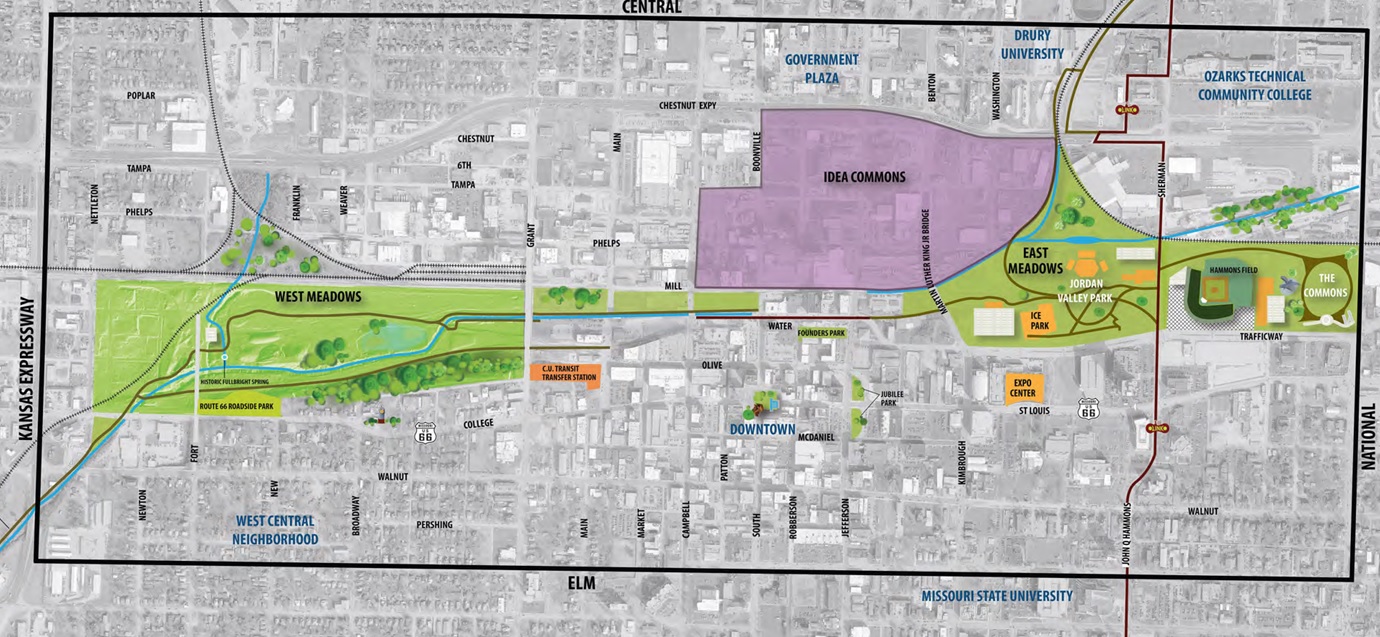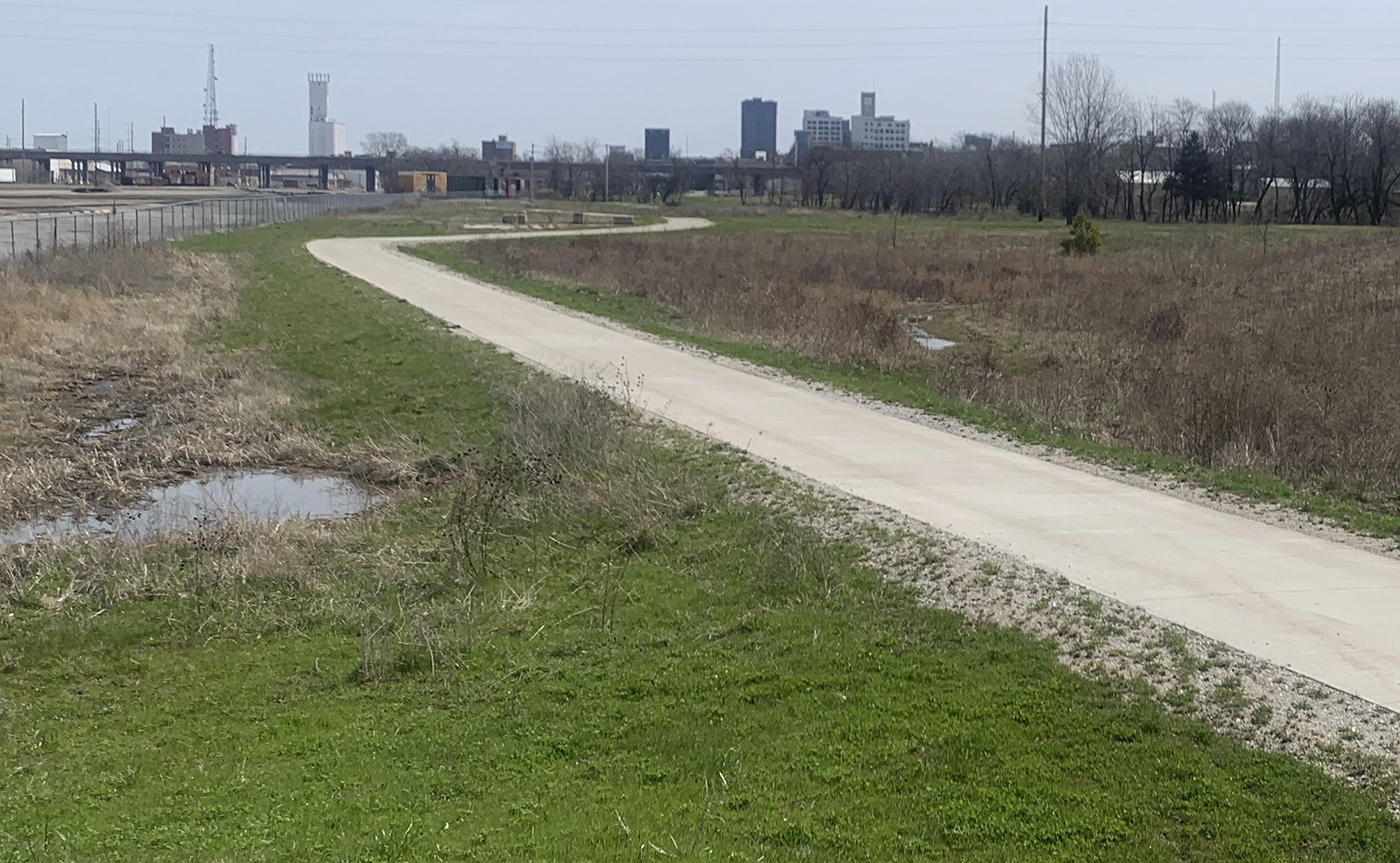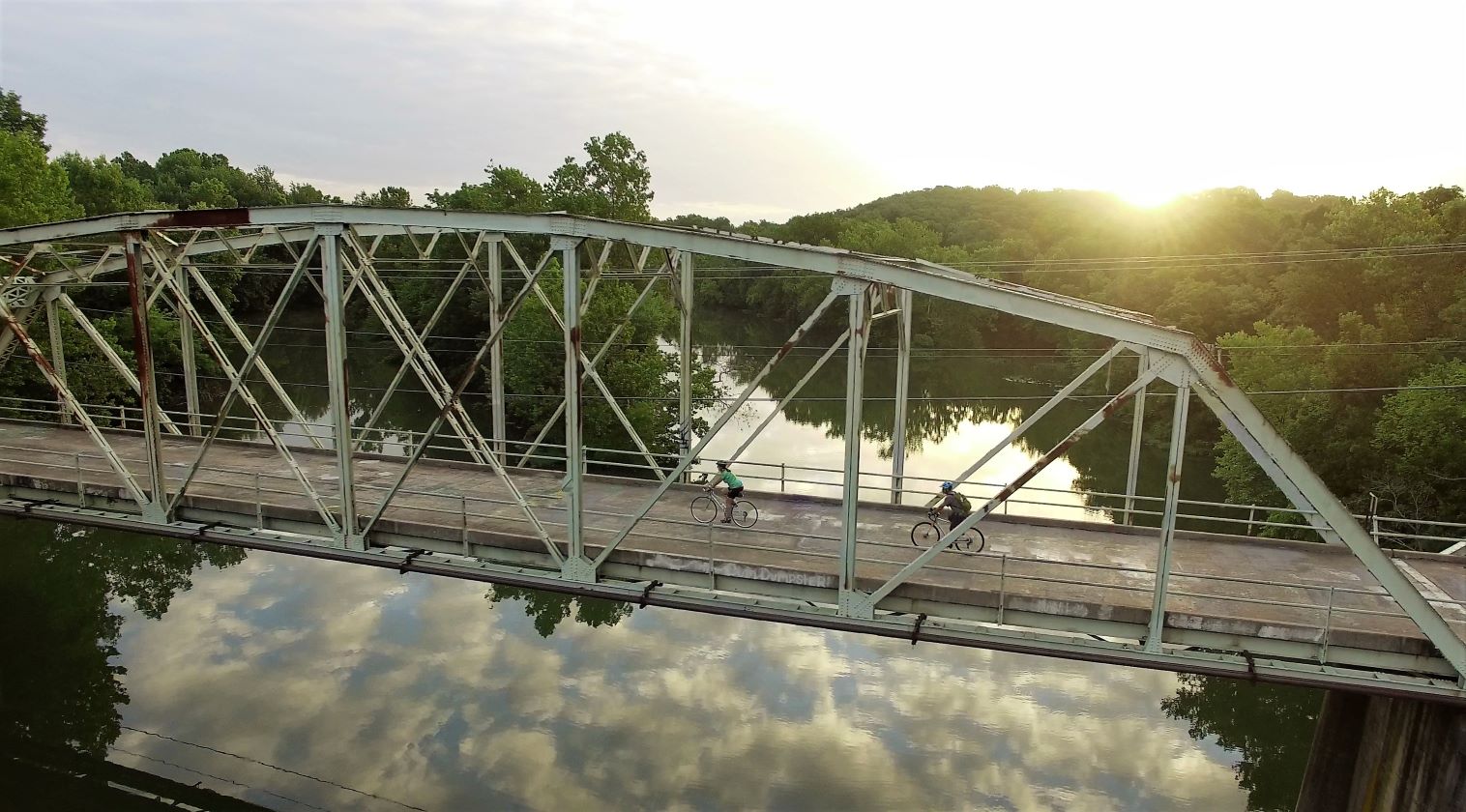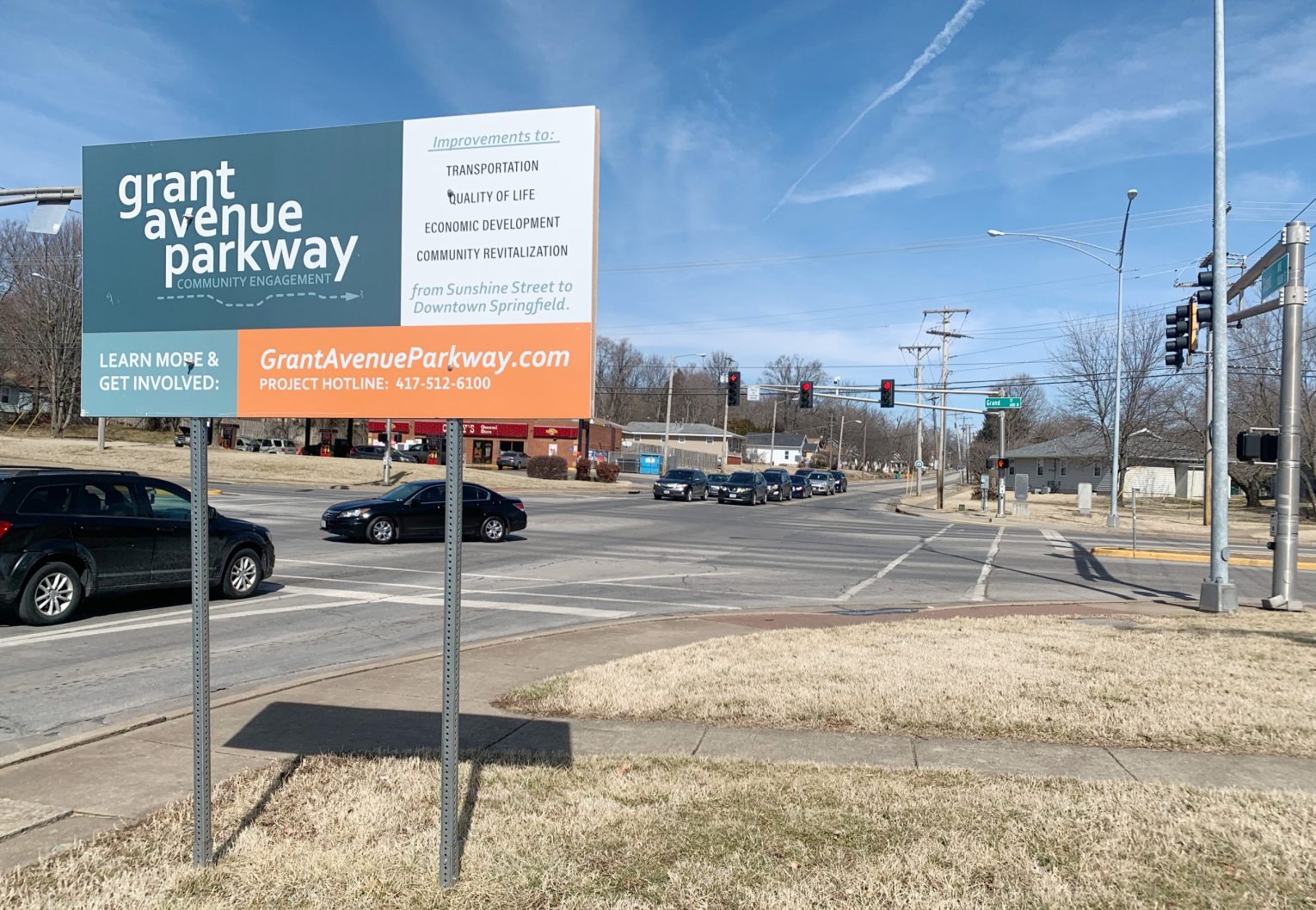Jordan Creek winds through downtown Springfield, from Kansas Expressway east to a spot just north of Hammons Field. In many places, the creek is confined to box culverts. In many respects, it is invisible to visitors.
A plan to bring the creek into the open and create a series of outdoor attractions that encourage people to walk and linger downtown is part of a larger revitalization plan for the area, and an even larger plan to develop greenspace in Springfield.
Summary
Development of parks, trails and greenspaces are key components of two documents that will guide Springfield’s development in the short-term and long-term futures. The Jordan Creek Daylighting project is intended to create a connection between three public park spaces around downtown Springfield that will be developed into destinations.
Why care?
While the Forward SGF master plan won’t be a legally binding document, it will be used heavily as Springfield’s leaders guide the city through growth and development over the next 20 years. Whether you’re an avid runner, cyclist or outdoor enthusiast — or not — park, trail and greenspace developments are a key element of Springfield’s economic future.
“Quality of place,” is a phrase bandied about often as the Springfield City Council and city government staffers work on Forward SGF, a 20-year master plan for Springfield's growth and development. The master plan is slated for formal adoption this summer. While it's not a legally-binding document, it is designed to function as a road map for decisionmakers to use when weighing projects, policies and financial decisions.
The city of Springfield employs a director of quality of place initiatives, Tim Rosenbury, who has the job of helping to plan large-scale initiatives and developments that are in harmony with the neighborhoods where they will be placed. Quality of place, he said, includes the idea of taking something that was good once and restoring it in a way that it becomes as good or better than it ever was.
“If we want to have a quality of life, then quality of place is a natural extension out of that,” Rosenbury said at a Forward SGF work session March 22 at the Springfield Art Museum. “As council members, I would think that quality of place can breed pride of place, and pride of place is what we desperately need in our community.”
Consultant John Houseal of Chicago-based Houseal Lavigne Associates is one of the principal consulting authors of Forward SGF. Houseal said a comprehensive plan gives a city many advantages in economic growth and development. A plan does not necessarily represent the exact views of every Springfield resident, but it helps the people of Springfield find common ground.
“It's impossible to get two people to agree on anything or everything, ask anybody who is married,” Houseal said. “You're just not going to agree on everything. Try getting a town of 100,000 people to agree on something; you can't do it, but you want to get something so there is consensus on the vision and the goal.”
Placemaking on the banks of Jordan Creek
In November 2019, the Springfield City Council looked at preliminary concepts for a plan to turn part of Jordan Creek into a community space. “Daylighting” is a term for opening up underground streams and/or restoring the stream to a more natural condition.
The Jordan Creek daylighting project is a plan to unearth the underground section of the creek downtown, which proponents say will reduce flooding risks, improve water quality and create an outdoor greenspace for the community to enjoy, which will then spur economic growth downtown.
On June 1, 2021, design consultants presented the city with a “string of pearls” concept for daylighting Jordan Creek. It would include the development of a primary site between West College Street and West Wall Street, generally northwest of the Park Central Square. The other two pearls in the string would be a revitalized Founders Park, and revitalization in the East Meadows area, the collective name for the lands that include Jordan Valley Park, Hammons Field and the nearby creek.
The primary Jordan Creek site would have open lawn space, historical markers, public art, furnishings and gateways to nearby trails and greenways. It would be able to host events, concerts, outdoor classes, pop-up retail shopping and food trucks and opportunities for access to the creek.
The concept is to turn all of the downtown area along Jordan Creek into a place that people will want to be for special events, or just because.
“We need to feel good about where we live; it needs to be the kind of community that people want to come back to, that new people want to come to and that people want to stay,” Rosenbury said. “Quality of place becomes a driving force for this plan simply because it's the right thing to do and because it addresses a lot of problems, not for its own sake, but quality of place occurring through a number of initiatives.”
Funding for Jordan Creek enhancements was approved by Springfield voters through the renewal of a level property tax in 2017. The tax generated slightly more than $6.7 million that has been budgeted for the project.
Blue Ribbons, Red Flags
The Springfield Community Focus Report is a document produced in odd-numbered years. Through a collaborative effort of nonprofit organizations, reports are assembled by subject-matter leaders in 11 topic areas. Each report has the basic structure of the chapter topics to provide consistency from year to year.
The report authors note “blue ribbons,” or positive attributes and trends, and “red flags,” negative factors and threats to a quality way of life, in each of the report’s chapters. It’s a quick way to point out the pros and cons of certain topics in Springfield and Greene County, like the chapter entitled “Recreation, Sports and Leisure.”
Green space preservation and the presence of trails and natural areas is a notable red flag identified in the report.
“Springfield still ranks far behind comparable cities in the number of parks and total acres managed,” the 2021 report authors note.
The Springfield-Greene County Park Board maintains more than 3,200 acres and 104 sites, ranging from small neighborhood parks to larger multi-use facilities like Nathaneal Greene Park and all of its amenities.
The park system includes four golf courses, the Dickerson Park Zoo, three community centers, Rutledge-Wilson Farm Community Park, botanical gardens, sports and athletic complexes, two indoor pools, six outdoor pools, school parks, and more than 100 miles of recreational trails.
The Springfield-Greene County Park Board is funded through user fees and through a sales tax dedicated to parks. It does not receive any additional revenue from any other entities, apart from any one-time grants that it is awarded.
“Countywide capital improvement sales taxes in 2001 and 2006 provided significant funding for parks, but the 2006 tax was not renewed after sunsetting in 2012,” the authors of the recreation chapter of the Community Focus Report wrote. “There is no timeline for placing a parks issue on the ballot in Greene County or Springfield in the near future.”
A list of unfunded parks projects, ranging from green space acquisition and facility upgrades to deferred maintenance and equipment replacement, now totals about $50 million, up from $47 million in 2019.
When finalizing its 2020-2021 budget, the Springfield-Greene County Park Board made $1.24 million in cuts, ranging from reductions in operating hours to cutting programs all together. Many of the budget cuts occurred in March 2020, just before the public health concerns of the COVID-19 pandemic led to stay-at-home orders and facility closures. The Springfield-Greene County Park Board lost an estimated $1.2 million in revenue in 2020 because of closures and program cancellations related to the COVID-19 pandemic.
The “Recreation, Sports and Leisure” chapter of the Springfield Community Focus Report was produced by Jenny Fillmer Edwards of the Springfield-Greene County Park Board with input from Bob Belote, Jim Fisher, Lance Kettering, Mary Kromrey, John Mackey, Anne-Mary McGrath, Kristen Milam, Karen Mellinger, Jerry Mitchell, Nick Nelson, Kim Reser, Francis Skalicky and Diana Tyndall.
Adding parks as Springfield grows
Deep within the Renew Jordan Creek master plan are some figures on overall growth projections for Springfield (which has roughly 170,000 people now) and Greene County (which has roughly 300,000 people now) over the next two decades.
“Springfield is anticipated to experience steady population and job growth, residential and commercial development activity, and increased demands for municipal and transportation services,” the demographics section of the document reads, in part. “By 2040, Greene County is forecast to add approximately 32,200 jobs and 47,000 residents, generating demand for new housing, retail goods and services, eating and drinking establishments and commercial and industrial space. Stemming from Greene County’s continued population growth, Springfield’s population is forecast to increase by 15,000 residents by 2040.”
According to the Forward SGF master planning documents, Springfield parks generate $13 million to $15 million annually for the local economy. Facilities host more than 50 national, regional, state and local sports tournaments.
Parks and recreational opportunities were ranked highly by Springfield residents who participated in community outreach efforts to gather input, during which 45.2 percent of resident questionnaire respondents voted park and outdoor assets as Springfield’s greatest strength.
The northwestern, southwestern and northeastern corners of Springfield are currently outside the service areas for the Springfield-Greene County park system. However, the consultants note that these areas of Springfield contain the Springfield-Branson National Airport, agricultural lands, City Utilities and other utility properties, and industrial sites.
Parks are typically placed in areas where they are accessible from residential areas. The consultants note in the documents that if Springfield sprawls outward from its center and agricultural areas are developed for housing in the future, there will be a need to allocate land for park use for people who live in these newly-developed residential areas.
The consultants identify the eastern central edge of Springfield, the area generally between Sunshine Street and Division Street, as underserved, and write that there needs to be a new public park within that area. There is an opportunity to distribute more “Mini Parks” in central Springfield along Sunshine Street, along the eastern edge to serve the residential neighborhoods east of U.S. Highway 65.
Springfield’s age demographics, as noted in the Jordan Creek conclusion statement, favor the idea of making places that young adults would want to visit.
“Springfield’s adolescent and young adult population account for 37.5 percent of the Springfield population,” the demographic analysis of the Renew Jordan Creek master plan reads. “These age groups have an above-average impact of Springfield’s retail industry and are heavy consumers of electronics, eating and drinking places, apparel and accessories, entertainment and rental housing.”
This further supports the concept of placemaking in downtown Springfield for people who live, work, or do a combination of both in the city’s urban center.
“We've learned that as technology becomes much more of a determinant in people's lives, and things become more virtualized, that place really matters, and that places like Springfield really matter,” Rosenbury said.
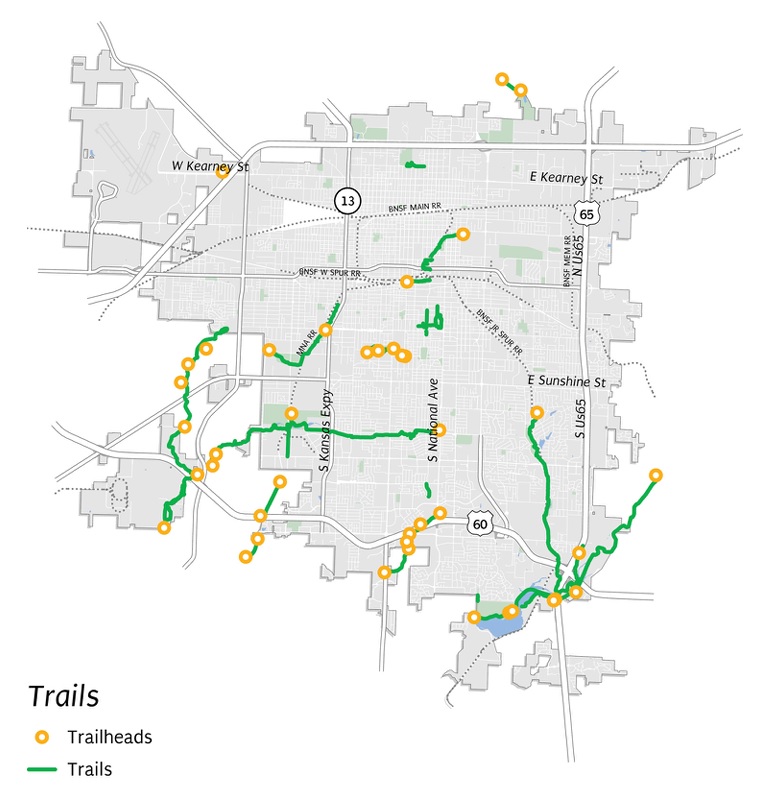
Greenways and trails connect the spots
There are more than 30 miles of trails or paved paths inside Springfield, and more than 75 miles of trails in total in the metro area.
“The trails and greenway system is a valuable community asset that has the potential to support both transportation and regional economic development,” part of the Forward SGF documentation on trails reads. “There is opportunity to continue moving the system beyond its recreational function to capitalize more on the transportation function of bicycle and trail facilities.”
The idea would be that a connected trail system would be useful for people who live close enough to their workplaces to ride bicycles to work instead of driving cars. Additionally, remote workers and tourists would use a connected trail system to go from one park or public space to another, enjoying Springfield's amenities as they walk to ride through town.
The authors of the Forward SGF plan note that public bicycle routes have public health, environmental, social equality and economic benefits.
Filling gaps in the trail system is a key action item in the Forward SGF plan for the next 20 years of growth and development.
“We've all been riding our bikes at some point, sometimes when we're young parents with kids in the back in a Burley (trailer) or whatever, and you're riding a trail and all of a sudden it just ends,” Houseal said. “You look across the street and there's no ramp, no trail, there's four lanes of traffic and no place to go.”
Obesity has been a Red Flag noted in numerous previous reports, with statewide adult obesity rates growing from 23.9 percent in 2004 to 34.8 percent in 2019. Greene County rates typically have been higher than the rest of the state. Childhood and adolescent obesity rates are also rising. Parks and recreation development, including family centers, sports, senior-citizen classes and youth programs, is dedicated to getting residents active and encouraging new habits that counter obesity and related health concerns.
Stable funding remains elusive
Stable public funding for parks, trails and sports infrastructure remains the No. 1 concern for recreation, according to the Community Focus Report.
A trend of unstable funding shows up across the parks and recreation community, with Lake Country Soccer, Friends of the Garden, Friends of the Zoo, Ozark Greenways, the Wilson’s Creek National Battlefield Foundation and the Springfield-Greene County Park Board relying on grants, private donors and other non-tax funding for capital improvement projects.
Houseal said a robust master plan, which is his hope for Forward SGF, can help Springfield secure investments and one-time grants in the future.
“We've talked to several large corporations, large industrialists, businesses, entrepreneurs — one of the first things they do is they go to a city's website and say, ‘What is the city picture for itself over the next couple of decades? What are they trying to achieve? And as an investor, as a business owner, as a family looking to move, do I want to be a part of that journey,” Houseal said.
Doing a good job on Forward SGF gives Springfield a good chance to demonstrate its value to new and existing investors who might look to expand their presence in Springfield.
“It's a playbook for all partners and all departments. It's one of the key opportunities for the city to get grant funding,” Houseal said.
Houseal had some advice for the Springfield City Council when it came to adopting the Forward SGF master plan, and that was to follow the map and stick with the concepts that the plan contains.
“Political will to stick to the plan is a big deal,” Houseal said. “A decade from now, you can look back and talk about how incredibly busy you were as a city, and then you can step back and say, ‘Look at what we accomplished. We have transformed these areas of our community. We really have a sense of place in areas, we're revitalizing X, Y and Z. You know, the plan is working,' because you stick to it, even though it's not easy to.”


